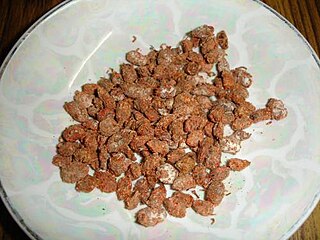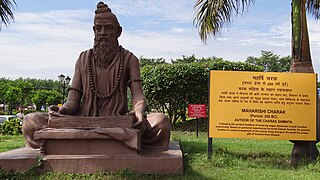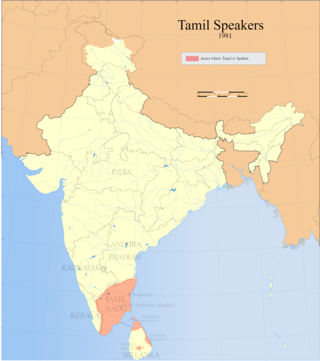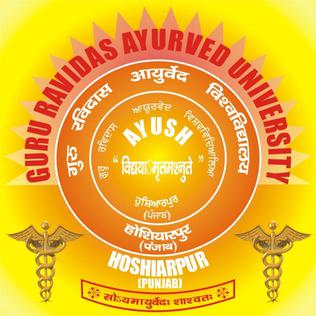
Ayurveda is an alternative medicine system with historical roots in the Indian subcontinent. The theory and practice of Ayurveda is pseudoscientific. Ayurveda is heavily practiced in India and Nepal, where around 80% of the population report using it.

Unani or Yunani medicine is Perso-Arabic traditional medicine as practiced in Muslim culture in South Asia and modern day Central Asia. Unani medicine is pseudoscientific. The Indian Medical Association describes Unani practitioners who claim to practice medicine as quacks.
The University of Colombo is a public research university located primarily in Colombo, Sri Lanka. It is the oldest institution of modern higher education in Sri Lanka. Specialised in the fields of natural, social, and applied sciences as well as mathematics, computer sciences, and law. It is ranked among the top 10 universities in South Asia.

The University of Moratuwa is a public university in Sri Lanka. It is located on the bank of the Bolgoda Lake in Katubedda, Moratuwa. Apart from academics including undergraduate and postgraduate studies, the University of Moratuwa presents social and cultural activities, student services, societies, and sports and recreational activities. The institution was known as Ceylon College of Technology, Katubedda before gaining university status. Its roots go back to the Institute of Practical Technology founded in 1960 to provide technical education.
Sri Lanka has its own indigenous scheme of traditional medicine which is called "Hela wedakama". This system has been practised for thousands of years in the island nation. On the other hand, the Sri Lankan āyurvedic tradition is a mixture of the Sinhala traditional medicine, mainland āyurveda and Siddha systems of India, Unani medicine of Greece through the Arabs, and most importantly, the Desheeya Chikitsa, which is the indigenous medicine of Sri Lanka. College teaching of these systems began in 1929 at what is now the Institute of Indigenous Medicine of the University of Colombo. The Siddha Medicine Unit moved in 1984 to the University of Jaffna

The Charaka Samhita is a Sanskrit text on Ayurveda. Along with the Sushruta Samhita, it is one of the two foundational texts of this field that have survived from ancient India. It is one of the three works that constitute the Brhat Trayi.

Siddha medicine is a form of traditional medicine originating in southern India. It is one of the oldest systems of medicine in India.
The Ministry of Ayush, a ministry of the Government of India, is responsible for developing education, research and propagation of traditional medicine systems in India. Ayush is a name devised from the names of the alternative healthcare systems covered by the ministry: Ayurveda, Yoga & Naturopathy, Unani, Siddha, Sowa Rigpa, and Homeopathy.

Sri Lanka has a free and universal health care system. It scores higher than the regional average in healthcare having a high Life expectancy and a lower maternal and infant death rate than its neighbors. It is known for having one of the world's earliest known healthcare systems and has its own indigenous medicine system.

The University of Jaffna is a public university in Jaffna, Sri Lanka. Established in 1974 as the sixth campus of the University of Sri Lanka, it became an independent, autonomous university in 1979.
The University of Colombo currently has seven faculties with 41 academic departments and two interdependent schools with five academic departments. All faculties and schools carries out courses of study and research in both graduate and undergraduate studies. In addition, the university has several institutions that specialize in different areas of research.
Amarasinghe Pathiranalage Gunapala Amarasinghe(Sinhala: අමරසිංහ පතිරණලාගේ ගුණපාල අමරසිංහ ) is a Sri Lankan academic. He is a research scientist and a senior lecturer in Ayurvedic paediatrics. He is currently a professor and the head of the Department of Prasutitantra and Kaumarabrithya of Institute of Indigenous Medicine, University of Colombo.

Guru Ravidas Ayurved University is a public university for Ayurveda, Yoga & Naturopathy, Unani, Siddha and Homeopathy located in Hoshiarpur, Punjab, India.
Shanthilal Devapriya Jayaratne MBBS, MD Post Graduate Institute of Medicine, Colombo, FRCP, FCCP was a professor of medicine at University of Sri Jayewardenepura and was Chairman of State Pharmaceuticals Corporation of Sri Lanka (SPC) and State Pharmaceuticals Manufacturing Corporation (SPMC).
Krishna Chandra Chunekar was an Indian ayurvedic practitioner and writer, known for the books he published, especially the translation of Vedic literature on herbal pharmacopeia. The Government of India awarded him, in 2013, the Padma Shri in medicine, the fourth highest civilian award, for his contributions.

The Gampaha Wickramarachchi University of Indigenous Medicine, is a public university located in Yakkala, Sri Lanka. It was established by Ayurveda Cakrawarti Pandit G.P. Wickramarachchi in 1928 as the Gampaha Sidayurveda Vidyalaya and in 1982 it was incorporated as Gampaha Wickramarachchi Ayurveda Vidyalaya under the Ministry of Indigenous Medicine.
Cannabis in Sri Lanka is legally sold through Ayurveda herbal shops, and can be used for medical and scientific purposes if given a license by the Ministry of Health. For recreational usage cannabis is not legal.
Gurdip Singh is a professor from Gwalior, India. He is a senior professor of Ayurveda and the Director of Post Graduate Studies at the SDM College of Ayurveda and Hospital in Hassan, Karnataka. He is considered an authority on the Ayurveda work Charaka Samhita. Singh was a dean of Institute for Post Graduate Teaching and Research in Ayurveda at Gujarat Ayurved University at Jamnagar, Gujarat.

The standard entry-to-practice degree in modern evidence-based medicine in India is the Bachelor of Medicine and Bachelor of Surgery (MBBS). Alternative systems of Medicine in India are Ayurveda (BAMS), Unani (BUMS), Siddha(BSMS), Homeopathy (BHMS). M.B.B.S. a credential earned upon completion of a five-and-a-half-year undergraduate program. The curriculum is divided into one year of preclinical studies in general science subjects and three and a half years of paraclinical and clinical studies, followed by a one-year clinical internship. Before beginning the internship, students are required to pass several examinations, the final one of which is conducted in two parts. Postgraduate education in medical specialties typically takes 3 additional years of study after the MBBS and concludes with the award of a Master of Surgery or Doctor of Medicine(MD). Postgraduate diplomas in medical specialities may also be awarded upon the completion of two-year training programs.
Charaka shapath is a certain passage of text in Charaka Samhita, a Sanskrit text on Ayurveda believed to have been composed between 100 BCE and 200 CE. The passage referred to as Charaka Shapath is written in the form a set of instructions by a teacher to prospective students of the science of medicine. According to Charaka Samhita, the unconditional agreement to abide by these instructions is a necessary precondition to be eligible to be taught in the science of medicine. The passage gives explicit instructions on the necessity of practicing asceticism during student life, student-teacher relationship, the importance of committing oneself fully and completely for the well-being of the patient, whom to treat, how to behave with women, and several other related issues. The passage appears as paragraphs 13–14 in Chapter 8 of the Vimanasthana in Charaka Samhita.













